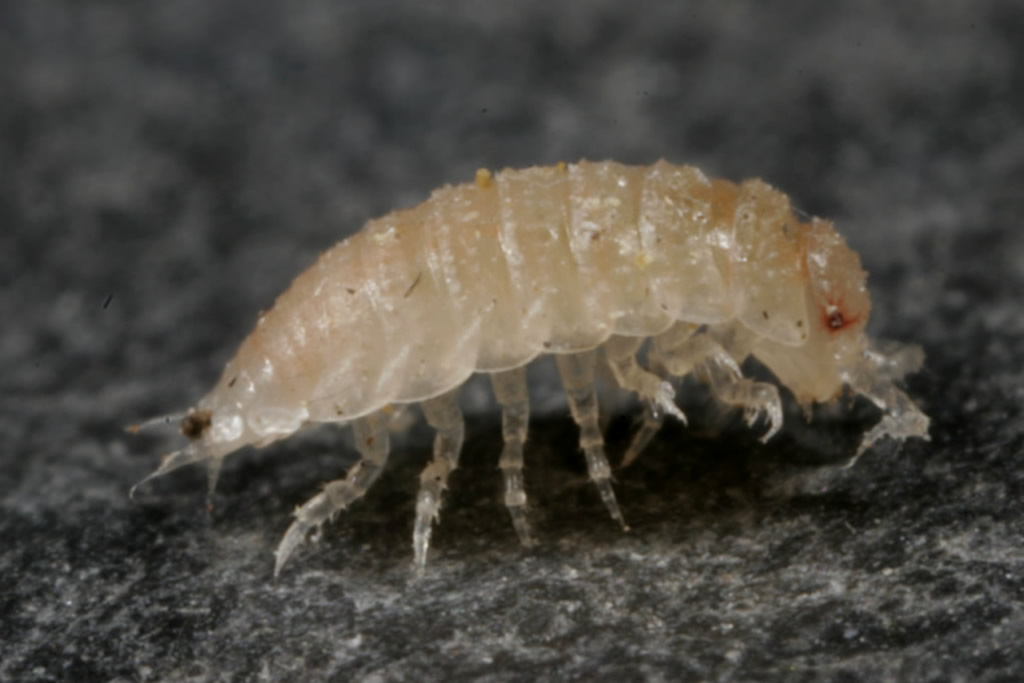Trichoniscoides helveticus (Carl, 1908)
Common name
Status:
- GB IUCN status: Least Concern
- GB rarity status: Nationally Scarce
ID Difficulty
Identification
The pygmy woodlice of family Trichoniscidae (and Styloniscidae) are readily distinguished from other woodlice by the shape of the antennal fagellum which comprises a tapered cone (of indistinct segments) bearing a terminal bristle.
Trichoniscoides is a difficult genus and only male specimens of Trichoniscoides helveticus can be distinguished from T. sarsi (or T. saeroeensis). These are small (to 4 mm) creamy-white woodlice flushed with varying amounts of orange with the dorsal surface covered with weak tubercles. In T. helveticus (and T. sarsi) the eye is composed of a single dark red ommatidium (more pinkish orange in T. saeroeensis).
All eye and body pigments are rapidly lost in alcohol, thus making preserved specimens difficult to separate from Metatrichoniscoides celticus or M. leydigii.
Identification is made by microscopic examination of male 2nd endopod, which curves inwards and has a blunt notched tip (like that of an elephant's trunk).
Distribution
This pygmy woodlouse was first discovered in Britain in 1990 (BISG Newsletter 28, pg.2). It is known from scattered localities across central southern England, but it is likely to be considerably under-recorded. The few available records suggest it has a mutually exclusive distribution with T. sarsi (BMIG Newsletter 4, pg.1); interestingly a situation also seen in the Netherlands (Berg, 2008). It has not been recorded from Ireland.
[The record from Fife shown on the NBN map needs verification.]
Habitat
It has a strong preference for semi-natural habitats with undisturbed friable calcareous soils, including short-turf grassland, rank grassland, mixed scrub and deciduous woodland.
Specimens are typically found with difficulty by searching the underside of large stones partially embedded into soil, or from amongst chalky soil or limestone rubble. It seems to be easier to find on sunny frosty days when it takes 'shelter' beneath stones in full sun. It is often associated with other soil-dwelling trichoniscids, primarily Trichoniscus pygmaeus.
This summary is based on the detailed account in Gregory (2009).
References
Gregory, S. (2009) Woodlice and Waterlice (Isopoda: Oniscidea & Asellota) in Britain and Ireland. Field Studies Council/Centre for Ecology & Hydrology.
Links
World List of Marine, Freshwater and Terrestrial Isopod Crustaceans: https://www.marinespecies.org/isopoda/aphia.php?p=taxdetails&id=263631


